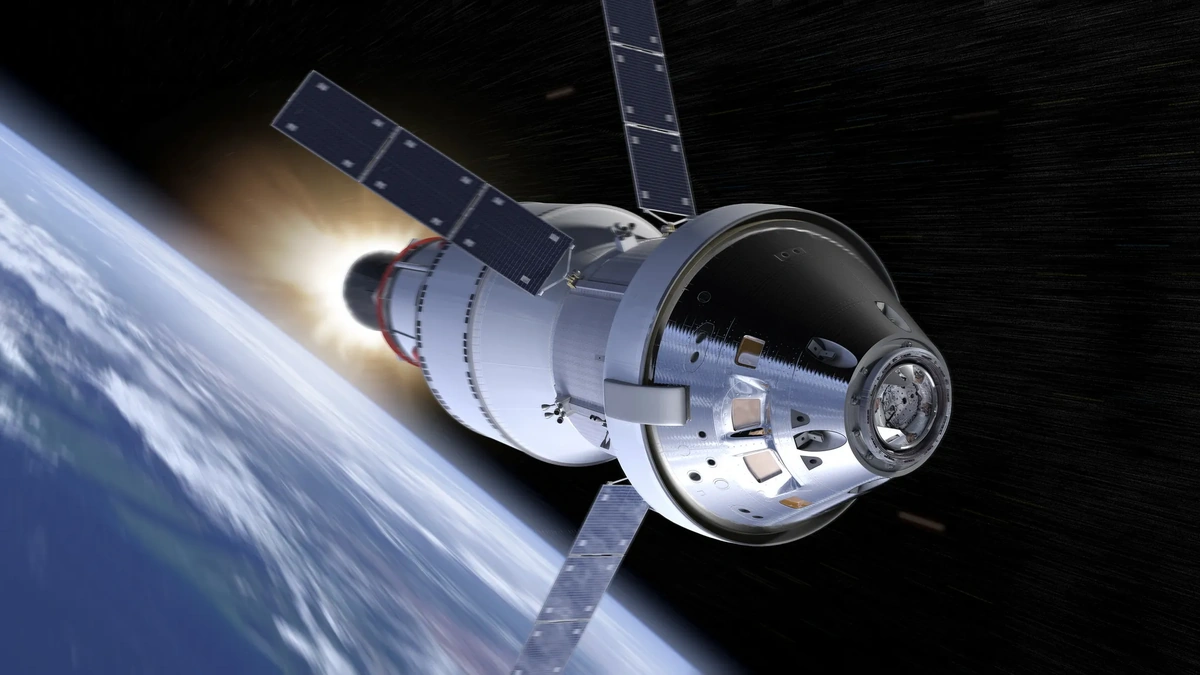The race to return to the moon is heating up, folks! And let’s be honest, it’s not just about planting flags and taking cool photos. It’s about pushing the boundaries of human exploration, technological innovation, and, well, maybe a little bit of national pride. The latest news? Orion, the spacecraft tasked with ferrying astronauts on this epic journey, just completed a crucial move toward its planned 2026 launch. So, what exactly did they do, and why does it matter to us here in India, even if we’re not strapping ourselves into a rocket anytime soon?
Orion’s Milestone | A Giant Leap Closer

Here’s the thing: building a spacecraft capable of surviving the harsh environment of space and safely transporting humans is no walk in the park. It’s a complex, multi-stage process involving countless tests, revisions, and, yes, even a few setbacks. Orion’s recent milestone involves a critical systems check and integration, essentially ensuring all the components are talking to each other nicely. Think of it like making sure all the players in a cricket team are on the same page before a big match – communication is key! A common mistake I see people make is underestimating the complexity of these missions. As per NASA’sofficial website, this meticulous process drastically reduces the risk of failure during the actual mission.
Why This Matters | The Ripple Effect of Space Exploration
Okay, so a spacecraft passed a test. Big deal, right? Wrong! What fascinates me is the sheer number of technologies that were originally developed for space exploration and now have everyday applications. From GPS navigation (thanks, satellites!) to scratch-resistant lenses (developed for astronaut visors), space exploration has consistently driven innovation that benefits us all. And here’s why this Orion launch is particularly relevant: it’s a stepping stone towards establishing a long-term human presence on the moon. According to the latest reports, the aim is to use the moon as a testbed for technologies needed for even more ambitious missions, like sending humans to Mars. That means more research, more development, and more opportunities for countries like India to collaborate and contribute to the global space effort. But , it’s more than just tech. The shared human endeavor of space exploration inspires the next generation of scientists, engineers, and dreamers.
India’s Space Ambitions | A Rising Star
India’s own space program is rapidly advancing, with missions like Chandrayaan and Mangalyaan showcasing our capabilities on a global stage. The success of these missions has not only boosted national pride but has also positioned India as a key player in the international space community. And, so, Orion’s mission to the moon could potentially pave the way for future collaborations between NASA and ISRO, opening up new avenues for joint research, technology sharing, and even crewed missions. Let me rephrase that for clarity: it’s not just about going to the moon; it’s about building a future where space exploration is a collaborative, global effort. The globalcooperation fosters innovation and reduces costs.
The Challenges Ahead | It’s Not All Smooth Sailing
Let’s be honest, space exploration is fraught with challenges. From the immense financial investment required to the technical complexities of building and launching spacecraft, there are numerous hurdles to overcome. And what also matters is the ethical considerations surrounding space exploration, such as resource utilization and planetary protection. But here’s the thing: these challenges are precisely what drive innovation. They force us to think outside the box, develop new technologies, and push the boundaries of what’s possible. The one thing you absolutely must double-check is funding, to ensure there are no budget cuts. Lunar missions are expensive and politically sensitive.
Looking Ahead | The Future of Lunar Exploration
Orion’s 2026 launch is just the beginning. The long-term vision involves establishing a sustainable human presence on the moon, with plans for lunar bases, resource extraction, and even scientific research. This lunar exploration will not only deepen our understanding of the moon itself but also provide valuable insights into the formation of our solar system. And I initially thought this was straightforward, but then I realized the profound implications for our understanding of Earth’s own history. Spacecraft propulsion is key for future missions. We need to develop more efficient and sustainable methods of getting around up there. The futureof space exploration depends on it.
FAQ Section
What exactly is the Orion spacecraft?
Orion is a spacecraft designed to carry humans to deep space destinations, including the Moon and eventually Mars.
When is the planned launch date for Orion’s mission to the Moon?
The current target launch date is in 2026.
What are the potential benefits of India’s involvement in lunar exploration?
Collaboration could lead to joint research, technology sharing, and new opportunities for Indian scientists and engineers.
What are some of the challenges associated with lunar missions?
High costs, technical complexities, and ethical considerations are among the major challenges.
What if there are delays in the Artemis program schedule?
Delays are always a possibility in complex space missions. Keep an eye on official announcements from NASA.
How does spacecraft technology affect everyday life?
Many technologies developed for space exploration have found applications in various industries, benefiting our daily lives.
So, there you have it. Orion’s key step toward its 2026 launch is more than just a technical milestone; it’s a symbol of human ambition, a testament to our relentless pursuit of knowledge, and a reminder that the sky is not the limit when there are footprints on the moon.




